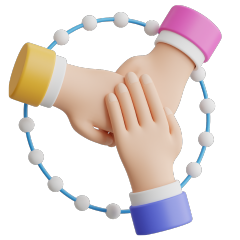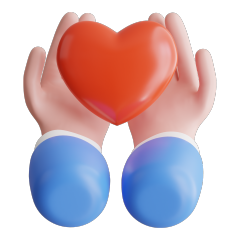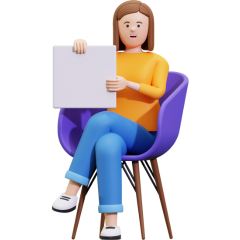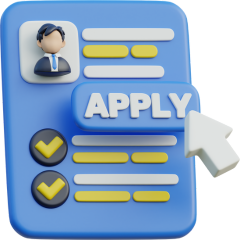Preventing falls in older Australians

Falls in older adults are rarely caused by just one factor. They are usually the result of a chain reaction of factors involving age-related physical changes, chronic health conditions, environmental hazards and behavioural choices.
Table of Contents
Staying independent and living at home for as long as possible is a goal for many older Australians. But there’s one invisible threat that may jeopardise that independence: falls.
Falls are the leading cause of injury-related hospitalisations and deaths among Australians aged 65 and over. According to the Australian Institute of Health and Welfare, over 100,000 older Australians are hospitalised due to a fall each year, and roughly 5,000 die as a result.
A fall can happen in a moment. A missed step. A wet tile. Foot caught in a rug. And while younger people may brush off a stumble and pick themselves back up without difficulty, the consequences are often serious for older adults.
However, keep in mind that falls are not an inevitable part of ageing. In most cases, preventing falls and fall‐related injuries in older people is possible.
Why falls happen
Falls in older adults are rarely caused by just one factor. They are usually the result of a chain reaction of factors involving age-related physical changes, chronic health conditions, environmental hazards and behavioural choices.
Here are the culprits:
- Muscle weakness and poor balance – As we age, we naturally lose muscle mass and coordination. Without regular strength and balance training, even a minor misstep can lead to a fall.
- Chronic health conditions affecting mobility – Diabetes, arthritis, stroke, Parkinson’s disease and heart disease can affect how safely we move.
- Vision and hearing loss – Poor eyesight makes it harder to see obstacles, and poor hearing can affect balance.
- Medication side effects – Blood pressure medications, sedatives and antidepressants can cause dizziness or drowsiness.
- Hazards in the home – Slippery floors, loose rugs, poor lighting and clutter all increase the risk of falls.
See related story: Words on the page, but out of reach: A closer look at print disability
The consequences are bigger than bruises
The aftermath of a fall can range from a bruised ego to a broken hip. And while broken bones can heal, what often lingers is something harder to mend: fear.
This “fear of falling” can be debilitating. Older adults may begin to restrict their activity, leading to a vicious cycle of reduced movement, causing muscles to weaken further, which increases fall risk again. It’s a downward spiral that many never escape.
Most falls are preventable
Falls aren’t random acts of bad luck. They’re often predictable and therefore preventable. Prevention involves more than just removing tripping hazards. It’s about building strength, awareness and support systems that allow older adults to thrive safely. Here’s how.
The Fall-Prevention Toolkit
1. Stay active.
Exercise is the single most effective way to prevent falls. But not just any exercise. Activities that improve balance, strength and flexibility are key. Tai Chi, for instance, has been shown to reduce falls by as much as 55%. Simple resistance training, such as chair squats or leg raises, also builds muscle essential for stability. Even 30 minutes a day of walking or light activity can make a measurable difference.
Pro tip: Always consult a GP or physiotherapist before starting a new exercise regimen.
2. Fix what can be fixed.
Too often, homes are filled with small risks waiting to cause big problems. A safe home starts with these practical steps:
- Improve lighting, especially in hallways, stairwells and bathrooms.
- Install grab bars in showers and next to toilets.
- Secure rugs with non-slip backing or remove them altogether.
- Use non-slip mats in the bathroom and kitchen.
- Fix uneven flooring or broken tiles.
- Keep pathways clear of cords, pet toys, shoes and furniture.
Consider booking a home safety assessment by an Occupational Therapist (OT). This allied health professional can identify and recommend changes specific to your living environment and health status.
3. Check your specs and ears.
Poor vision and hearing are significant contributors to falls, yet they’re often overlooked. Regular eye tests help ensure that prescriptions are up to date and eye conditions like cataracts or glaucoma are managed. Similarly, hearing loss affects spatial awareness and balance. If you use glasses or hearing aids, wear them consistently and have them checked annually.
4. Review medications regularly.
Talk to your GP or pharmacist about all medications you take, including over-the-counter ones. Some drugs, especially sedatives, antihypertensives and pain medications, can increase fall risk. Never adjust dosages yourself but do ask whether alternatives with fewer side effects are available.
5. Wear the right footwear.
This sounds simple, but it’s crucial. Slippers, socks, and even high heels can be risky. Choose well-fitting, flat shoes with non-slip soles. Avoid shoes that are loose or have thick rubber soles that could increase the risk of stumbling.
6. Use recommended aids.
Walkers, canes and personal alarms are tools for staying mobile, confident and in control.
How to safely help someone after a fall
Even with precautions, falls can still occur. Knowing how to respond can reduce injury severity and speed up recovery.
Here are some tips to safely help someone who has fallen to avoid further injury.
Do NOT try to get the person up straight away.
- Calm the person and yourself.
- Check for injuries. If they are badly injured, they need to stay where they are. Keep the person comfortable. Dial triple zero (000) and request an ambulance.
- If they are not badly injured and feel they could get up, get two sturdy chairs and place one near the person’s head and one near their feet.
- It is important that the fallen person does the work. The helper should only guide lightly, helping the person to roll onto their side.
- Help the person to kneel.
- Place one chair in front of the kneeling person.
- Ask the person to lean on the seat of the chair and bring one leg forward and put that foot on the floor.
- Place the second chair behind the person. Ask them to push up with their arms and legs and then sit back in the chair behind them. Guide them up and back into the seat, remembering not to lift them – they should be doing the work. Keep your back upright.
- Contact their GP to inform them of the fall and relay any relevant information.
- Report the incident to your care provider (like Leora Healthcare!). You may also be asked to document the incident for medical and legal reasons.
Falls, even minor ones, should always be reported. They are a red flag indicating something
Where to get help
If you or a loved one is concerned about fall risk, start with your GP. Ask about:
- A falls risk assessment
- Home visits from an OT or physiotherapist
- Access to exercise classes or falls prevention programs
Leora Healthcare can also assist with in-home safety checks, health assessments, home modification support, care coordination and follow-up after a fall.
Resources on fall prevention for older people
Preventing falls is about giving older Australians the tools, support and confidence to keep living life on their terms safely, actively and with dignity.
Across the country, both local and national organisations are working hard to make homes safer, raise awareness and support healthy ageing.
Here are some trusted sources to explore:
- Don’t Fall For It – Falls Can Be Prevented – from the Australian Government Department of Health, this guide covers practical steps to reduce falls and stay active safely.
- Stay Safe at Home – Prevent a Fall – a resource from NSW Health offering tips to make your home safer and lower your risk.
- Falls Prevention | Australian Commission on Safety and Quality in Health Care – focused on how falls can be prevented in healthcare settings, aged care and the community.
- Falls Prevention at Home – Better Health Victoria provides straightforward advice for making safer choices around the home.
- Preventing Falls | Ausmed – educational content for carers and healthcare workers on supporting older adults safely.
- Preventing Falls and Fall-Related Injuries in Older People – a clinical overview published in the Medical Journal of Australia with the latest evidence-based strategies.
These aren’t just handouts or checklists. They’re practical, proven tools that can help older Australians stay safe and keep them moving and living well.
Need support staying safe at home?
If you or someone you care about could use help making the home safer, staying active or recovering after a fall, our team is here for you.
At Leora Healthcare, our experienced support workers can assist with:
- Personal care and mobility
- Home safety and daily routines
- Coordinating falls prevention services
- Ongoing recovery support after injury or hospital stays
We work with you to stay safe, confident and independent every step of the way.
Contact our team today to learn how we can support your wellbeing at home. From fall prevention strategies to hands-on daily support, Leora is here to help you live well on your terms.





